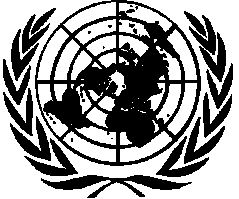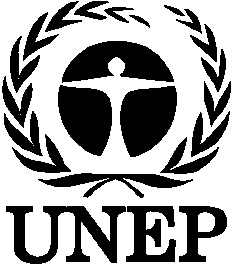NATIONS
EP


Environment
Programme
GENERAL
UNEP/POPS/INC.3/3
2 June 1999
ORIGINAL: ENGLISH
| UNITED NATIONS |
EP |
||

|
United Nations Environment Programme |
Distr GENERAL UNEP/POPS/INC.3/3 ORIGINAL: ENGLISH |
|
INTERGOVERNMENTAL NEGOTIATING COMMITTEE FOR AN
INTERNATIONAL LEGALLY BINDING INSTRUMENT
FOR IMPLEMENTING INTERNATIONAL ACTION ON
CERTAIN PERSISTENT ORGANIC POLLUTANTS
Third session
Geneva, 6-11 September 1999
DEFINITIONAL ISSUES RELATING TO PERSISTENT ORGANIC POLLUTANTS:
DISPOSAL, DESTRUCTION, WASTES AND STOCKPILES
Note by the secretariat
I. INTRODUCTION
1. It will be recalled that, at its second session, held in Nairobi from 25 to 29 January 1999, the Intergovernmental Negotiating Committee took up a draft expanded outline of an international legally binding instrument for implementing international action on certain persistent organic pollutants (POPs) that had been prepared by the secretariat (UNEP/POPS/INC.2/2). At the end of its discussion of article D in that draft, on measures to reduce or eliminate releases of POPs into the environment, the Intergovernmental Negotiating Committee:
"[A]greed that more analytical work needed to be done with respect to the article. The distinction between destruction and disposal needed to be explored, as well as the definitions and the relationships between wastes and stockpiles. The secretariat was requested to consult with the Secretariat of the Basel Convention and other relevant sources concerning these issues." (UNEP/POPS/INC.2/6, para. 61)
2. In response to this request, the secretariat, in cooperation with the Secretariat of the Basel Convention on the Control of Transboundary Movements of Hazardous Wastes and their Disposal, has prepared the present note. This paper is not intended to provide a thorough analysis of the definitional issues surrounding disposal, destruction, wastes and stockpiles of POPs, but, rather, focuses on how these issues are addressed within the Basel Convention. Not covered in the present document are those bilateral, multilateral, and regional agreements or arrangements regarding transboundary movement of hazardous wastes that article 11 of the Basel Convention allows parties to enter into with non-parties, provided that such agreements or arrangements do not derogate from the environmentally sound management of hazardous wastes and other wastes as required by the Convention. An analysis of such agreements concluded as of September 1997 was prepared by the Secretariat of the Basel Convention for the fourth meeting of the Conference of the Parties. /1
II. DISTINCTION BETWEEN DESTRUCTION AND DISPOSAL
3. In article 2, paragraph 2, of the Basel Convention, "disposal" is defined as any operation specified in annex IV to the Convention. That annex is, in turn, divided into two categories:
(a) Operations which do not lead to the possibility of resource recovery, recycling, reclamation, direct reuse or alternative uses (annex IV A); and
(b) Operations which may lead to resource recovery, recycling, reclamation, direct reuse or alternative uses (annex IV B).
4. The former category involves final disposal and includes operations like deposit into landfills, land treatment, deep injection, surface impoundment, release into a water body, biological treatment, physico-chemical treatment, incineration, and temporary or permanent storage. The latter category involves recovery operations and includes use as fuel (other than in direct incineration), solvent reclamation, recycling, recovery of components used for pollution abatement or from catalysts, used oil refining, and land treatment resulting in benefit to agriculture or ecological improvement. However, as noted in the glossary prepared for the instruction manual for the control system for transboundary movements of hazardous wastes and other wastes, adopted by the Conference of the Parties to the Convention at its fourth meeting, /2 in some countries, disposal refers only to the operations specified in annex IV A, that is, to such operations which do not lead to any form of recovery.
5. The term "destruction" is not explicitly defined in the Basel Convention and is not listed as a disposal option under annex IV A. It might be considered a subset of those activities included under the definition of disposal. This subset could include activities where the waste is almost completely eliminated through physico-chemical or biological treatment, through incineration or through other means. The Basel Convention includes such activities within its definition of disposal.
6. The issues relating to destruction are complicated by the fact that destruction technologies may generate wastes that require some form of disposal. Such technical issues are considered in a number of technical guidelines prepared by the Technical Working Group of the Basel Convention, including the Technical Guidelines on Hazardous Waste: Physico-Chemical Treatment and Biological Treatment /3 and the Technical Guidelines on Incineration on Land. /4
III. DISTINCTION BETWEEN WASTES AND STOCKPILES
7. Article 2, paragraph 1, of the Basel Convention defines "wastes" as substances or objects which are disposed of or are intended to be disposed of or required to be disposed of by the provisions of national law. A stockpile of a material could be considered a waste if it is intended for disposal or is required to be disposed of.
8. According to the Working Group on Waste Management Policy of the Organisation for Economic Cooperation and Development (OECD), a waste can cease to be a waste when a recovery, or another comparable process eliminates or sufficiently diminishes the threat posed to the environment of the original material (waste) and yields a material of sufficient beneficial use. In general, the recovery of a material (waste) will have taken place when: it requires no further recovery processing; can be used in the same way as a material which has not been defined as waste; and the recovered material meets all relevant health and environmental requirements. /5
9. Article 1, paragraph 1, of the Basel Convention states that, for the purposes of the Convention, the following shall be considered to be "hazardous wastes":
(a) Wastes that belong to any category contained in annex I to the Convention (which includes wastes from certain types of facilities or production or treatment processes), unless they do not possess any of the characteristics listed in annex III (which includes, inter alia, explosive, flammable, poisonous, infectious, corrosive, chronically toxic and ecotoxic substances or wastes); and
(b) Wastes not covered under subparagraph (a) but are defined as, or are considered to be, hazardous wastes by the domestic legislation of the party of export, transit or import.
10. Specific types of wastes to be characterized as hazardous under the article 1, paragraph 1 (a), of the Basel Convention were further elaborated by the Conference of the Parties at it fourth meeting, held in February 1998. At that meeting, the Conference, by its decision IV/9, adopted the following two new annexes to the Convention: /6
(a) Annex VIII, which lists wastes that would normally be considered hazardous under the Convention but whose designation on the list does not preclude the use of annex III to demonstrate that the waste is not hazardous;
(b) Annex IX, which designates wastes that would not normally be considered hazardous under the Convention unless they contain annex I material to an extent causing them to exhibit an annex III characteristic.
IV. NEXT STEPS
11. Experience within the Basel Convention implementation process, the OECD Working Group on Waste Management Policy, and other forums has shown the difficulty in defining waste in very precise terms and in determining what should be included under the definition of disposal. A more practical approach may be to consider whether a material is to be considered a waste subject to the Basel Convention on a case-by-case basis. Such an approach could be applied to stockpiles of POPs or materials containing POPs in determining whether they are wastes subject to the Basel Convention. To assist those making such determinations, existing international guidance materials could be used and, where necessary, new technical guidelines could be developed.
12. Preliminary consultations by the Secretariat of the Basel Convention with experts of the Technical Working Group under the Convention indicate that the disposal/destruction of stockpiles of POPs, when intended for disposal in the context of annex IV A of the Basel Convention, should be dealt with within the context of that instrument. Consideration of stockpiling and storage of POPs for the purpose of disposal/destruction, or for recycling is important in view of possible coverage of such activities by disposal operations D15 (storage pending final disposal) or R13 (accumulation of material intended for recovery operations) list in annex IV to the Basel Convention. /7
13. These issues will be introduced at the next meeting of the Open-ended Ad Hoc Committee for the Implementation of the Basel Convention, to be held from 21 to 25 June 1999, in the context of the inclusion of a number of activities on POPs in the proposed programme of work of the Technical Working Group of the Convention. These tasks include:
(a) Implementation of a work programme on dioxins and furans;
(b) Classification of waste pesticides destined for reformulation together with details of recovery operations of concern;
(c) Consideration of the issue of the stockpiling for the purpose of disposal/destruction or for recycling;
(d) Consideration of the preparation of further technical guidelines for the environmentally sound management of POPs; and
(e) Issue guidance notes or materials to organizations involved in PIC and POPs on the classification and hazard characterization of wastes with the framework of the Basel Convention. /8
14. The secretariat will provide the Intergovernmental Negotiating Committee at its future sessions with information about further developments on these issues within the context of the Basel Convention and in other relevant forums, when available.
-----
1 - Basel Convention document UNEP/CHW.4/Inf.12.2 - Basel Convention Series/SBC No. 98/003 (Geneva, March 1998), appendix 1.
3 - Basel Convention Series/SBC No. 99/002 (Geneva, March 1999).
4 - Basel Convention Series/SBC No. 97/005 (Geneva, January 1997).
5 - See OECD document OECD/ENV/EPOC/WMP(98)1/REV1, para. 43.
6 - The full text of decision IV/9 and the new annexes to the Convention may be found in the annex to Basel Convention document UNEP/CHW.4/35 (also circulated as Basel Convention Series/SBC No. 98/001 (Geneva, March 1998)).